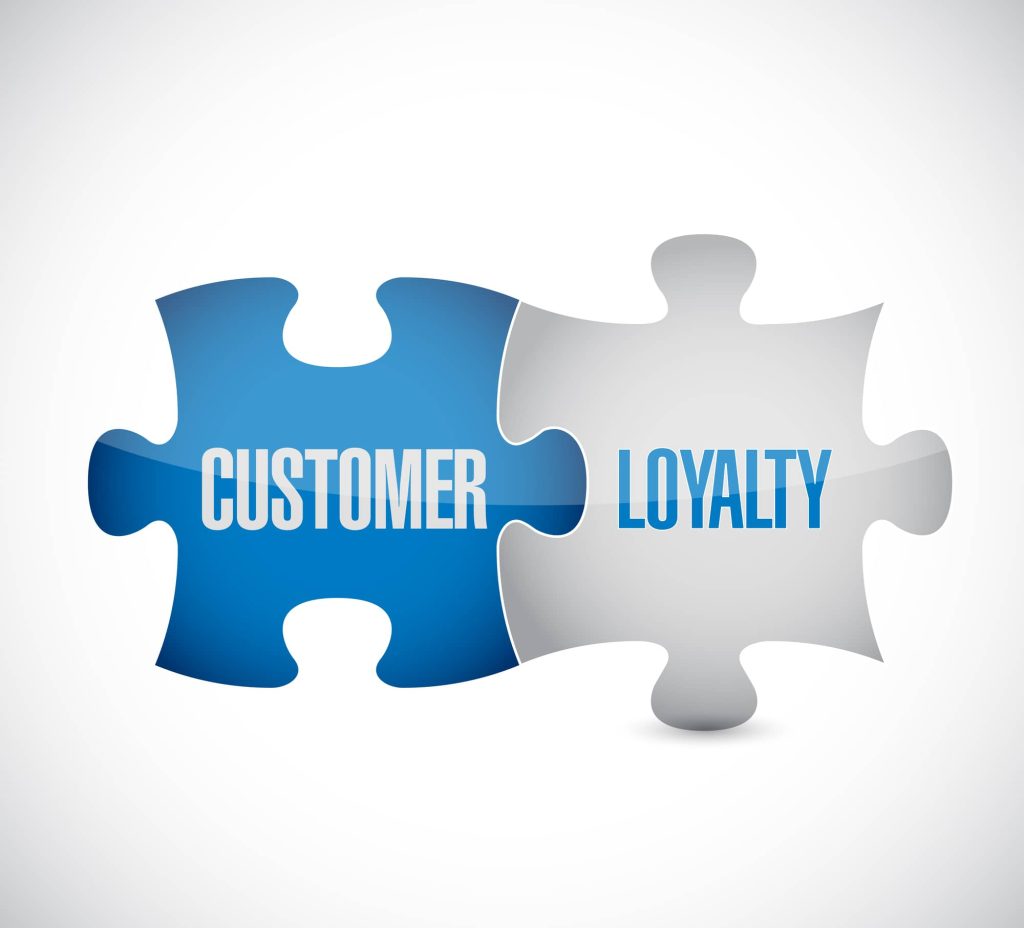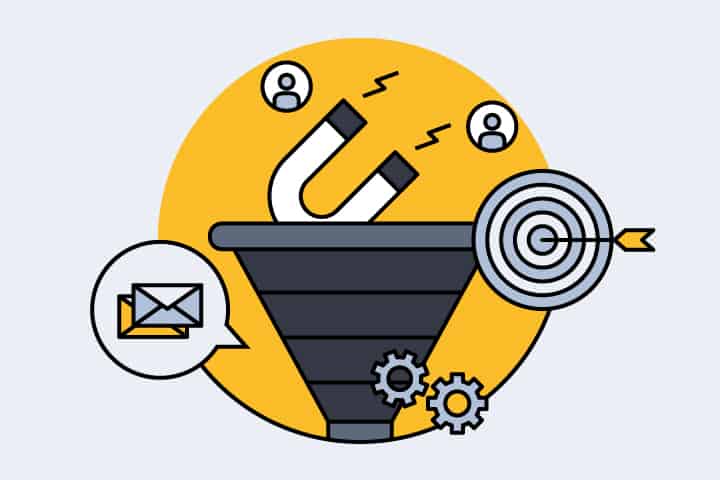In the bustling world of e-commerce, establishing a strong brand identity and maximizing social media engagement are not just beneficial; they are essential. Let’s dive into how you can create a distinct brand voice and leverage social media to captivate and engage your audience so that you can increase your Bigcommerce store sales.
Establishing a Distinct Brand Identity

Think of your brand as the personality of your business. Just like a person, your brand needs to have a unique voice, look, and feel. All of the above can be a reality if you set your branding pieces in place with the help of a unique brand name, logo design, brand voice, and promise. This uniqueness is what sets you apart in a crowded market. It’s what makes customers choose you over competitors.
Creating Your Visual Identity
Your brand’s visual identity encompasses everything from your logo to your color scheme and typography. These elements should be consistent across all platforms – your website, social media, packaging, and even your business cards. This consistency ensures that customers recognize your brand no matter where they see it.
Consistency is Key
Maintaining this consistent branding might seem daunting, but it’s all about coherence. For instance, if your brand voice is friendly and casual, ensure this tone permeates through your website copy, social media posts, and customer service interactions. Consistency breeds familiarity, and familiarity breeds trust.
Maximizing Social Media for Customer Engagement
Did you know that, according to Sprout Social, 91% of people believe in social media’s power to connect people? That’s a huge opportunity for your brand to connect with potential customers. But how do you engage effectively?
- Be Active and Responsive: Regular posts and prompt responses to comments or messages show that your brand is active and cares about its audience.
- Content Variety: Mix up your content with videos, blogs, polls, and more to keep your audience interested and engaged.
The Power of Influencer Marketing
Influencer marketing can significantly amplify your brand’s reach. By collaborating with influencers who align with your brand values, you can tap into their followers, gaining more visibility and authenticity. As reported by Business Insider, influencer marketing is expected to grow to be worth $15 billion by 2022, highlighting its increasing importance.
Case Study: Brand Success Through Social Media
Take the example of Glossier, a beauty brand that grew primarily through social media. By focusing on real customer stories and engaging content, they’ve built a brand that resonates with their audience, turning customers into brand advocates.
Optimizing Email Marketing and Automation Techniques
In today’s digital age, mastering the art of email marketing and marketing automation is like finding a treasure map to customer engagement and conversion. Let’s explore how to create email campaigns that captivate and convert, and how automation can be your secret weapon in personalizing customer experiences.
Building Effective Email Marketing Campaigns
The first step in effective email marketing is creating content that speaks directly to your audience. But how do you make your emails stand out in a crowded inbox?
- Know Your Audience: Understand who you are writing to. This understanding will shape the tone, content, and style of your emails.
- Segment Your Lists: Not all customers are the same, and neither should be your emails. Segmenting your email list helps in sending targeted messages that resonate with different groups.
From Lead to Customer: The Email Journey
Now, you might wonder, how do you turn a curious click into a steady customer? It’s all about nurturing.
- Provide Value: Share tips, insights, or even a friendly hello. Emails that add value help build trust and keep your brand top-of-mind.
- Call-to-Action: Every email should have a purpose, be it to inform, entertain, or sell. Make this clear with a compelling call-to-action.
Advancing with Marketing Automation
Sounds ironic, doesn’t it? But automation, when done right, can bring a personal touch to your marketing efforts at scale.
- Personalized Emails: Tools like Mailchimp or HubSpot can automate email personalization, addressing customers by name or tailoring content based on their interests.
- Automated Triggers: Set up automated emails triggered by specific actions, like a welcome email after signing up or a reminder when a customer leaves items in their cart.
Streamlining Customer Interactions
Automation isn’t just about sending emails. It’s about creating a seamless customer journey.
- Chatbots for Instant Support: Incorporating chatbots on your website can provide instant support, guiding customers through queries or purchases.
- Automated Sales Processes: From lead generation to after-sales service, automation can streamline various aspects of your sales process, to “automation – for example, in enterprise CRM software – can streamline various aspects of your sales process making it efficient and customer-friendly.
Did You Know?
According to a 2020 study by Statista, email marketing has an average ROI of $42 for every $1 spent. That’s a statistic too good to ignore!
Elevating E-commerce with SEO and User-Generated Content
In the ever-evolving world of e-commerce, two powerful tools can significantly elevate your online presence: Search Engine Optimization (SEO) and user-generated content (UGC). Let’s delve into how these strategies can transform your e-commerce success.
SEO Strategies Tailored for E-commerce Success
SEO isn’t just about keywords; it’s about creating an enjoyable user experience that search engines love. But where do you start?
- Site Structure and Navigation: Ensure your website is easy to navigate. A well-structured site with clear categories helps search engines and customers find what they need.
- Mobile Optimization: With over 54% of global website traffic coming from mobile devices (as per StatCounter, 2020), having a mobile-friendly website is essential. It is also recommended to build an app, which can offer a more tailored and efficient experience for mobile users.
Content: The Heart of SEO
Content is king in the SEO world. High-quality, informative, and engaging content not only attracts visitors but also encourages them to stay longer on your site, reducing bounce rates.
- Product Descriptions: Go beyond the basics. Rich, keyword-optimized product descriptions can significantly improve your search rankings.
- Blogging: Share insights, tips, or industry news through a blog. This not only boosts SEO but also establishes you as an authority in your niche.
Harnessing User-Generated Content
Did you know that according to a survey by BrightLocal, 87% of consumers read online reviews for local businesses in 2020? User-generated content like reviews and testimonials builds trust and authenticity.
- Encourage Reviews: Make it easy for customers to leave reviews. Respond to feedback, showing that you value customer input.
- Storytelling through UGC: Share customer stories and experiences. It’s a compelling way to showcase your products through the eyes of those who use them.
Integrating UGC into Your Branding and Marketing
User-generated content can be a goldmine for your marketing efforts. It provides genuine, relatable content that resonates with potential customers.
- Social Media Features: Feature customer posts on your social media. It’s a win-win; your customers get a moment in the spotlight, and you get authentic content.
- UGC in Email Campaigns: Include reviews or customer photos in your email campaigns to add a personal touch and build credibility.
Refining Conversion Rates and Customer Loyalty

In the dynamic world of e-commerce, two critical factors that can make or break your business are conversion rates and customer loyalty. Let’s explore how to enhance these aspects effectively.
Effective Conversion Rate Optimization
A/B testing is your scientific best friend in the quest for higher conversion rates. It involves comparing two versions of a webpage to see which one performs better. Here’s how you can implement it:
- Test One Change at a Time: Whether it’s a headline, a call-to-action button, or a product image, change only one element to accurately measure its impact.
- Use Analytics: Tools like Google Analytics can provide insights into how users interact with your site, helping you make data-driven decisions.
Understanding and Improving Customer Behavior
Analyzing customer behavior is crucial. Why do some visitors leave without buying, while others become repeat customers?
- User Experience: Ensure your website is user-friendly, with clear navigation and fast loading times. A seamless experience can significantly boost conversions.
- Personalization: Use customer data to personalize the shopping experience. According to a study by Epsilon, 80% of consumers are more likely to purchase when brands offer personalized experiences.
Strengthening Customer Loyalty and Service
Outstanding customer service is the backbone of customer loyalty. In a digital world, this means being accessible and responsive.
- Omnichannel Support: Be where your customers are. Whether it’s social media, email, or live chat, offer multiple channels for customer support.
- Quick Response Times: A study by SuperOffice found that the average response time for customer service requests is 12 hours and 10 minutes. Aim to do better!
Building a Successful Loyalty Program
Loyalty programs are not just about points and rewards; they’re about making customers feel valued.
- Offer Exclusive Benefits: Give loyal customers exclusive offers, early access to new products, or special discounts.
- Engage and Listen: Regularly engage with your loyalty program members and solicit their feedback. This engagement not only improves the program but also strengthens the customer-brand relationship.
Implementing Innovative Sales and Marketing Strategies
In the fast-paced world of e-commerce, standing out requires not just following trends, but setting them. Let’s explore how to craft online promotions that resonate and delve into creative marketing approaches that break the mold.
Crafting Impactful Online Promotions
Creating promotions that capture attention and drive sales is both an art and a science.
- Understand Your Audience: Tailor your promotions to the preferences and behaviors of your target demographic.
- Create Urgency: Limited-time offers can create a sense of urgency, encouraging quicker decision-making.
Seasonal and Event-Driven Strategies
Aligning promotions with seasons or events can significantly amplify their impact.
- Capitalize on Holidays: Black Friday, Cyber Monday, and Christmas are prime times for sales. Plan ahead to make the most of these opportunities.
- Leverage Local Events: Participate in local festivals or events to create community-focused promotions.
Did You Know?
According to a 2021 report by the National Retail Federation, holiday sales alone can represent up to 30% of annual sales for some retailers. That’s a huge chunk of revenue from just a few weeks of the year!
Creative and Emerging Marketing Approaches
Innovation is key in marketing. Are you ready to think outside the box?
- Influencer Collaborations: Partner with influencers who resonate with your brand for authentic endorsements.
- Interactive Content: Quizzes, polls, and AR experiences can engage customers in unique ways.
Success Stories in Creative Marketing
Real-world examples can inspire your marketing strategy.
- User-Generated Campaigns: Encourage customers to create content related to your brand. This not only engages your audience but also provides you with authentic marketing material.
- Guerrilla Marketing Tactics: Sometimes, unconventional approaches, like flash mobs or graffiti art, can create buzz and make your brand memorable.
Utilizing Data Analytics and Understanding Customers
In the digital age, data is the new currency. Understanding and leveraging this data can transform your e-commerce business. Let’s dive into how data analytics can inform business strategies and the importance of developing accurate buyer personas.
Data-Driven E-commerce Strategies
In a world where every click can be tracked, using analytics to guide business decisions is not just smart; it’s essential.
- Track Customer Behavior: Tools like Google Analytics provide insights into how customers interact with your site. What pages do they visit? Where do they spend the most time?
- Measure and Adapt: Regularly review your analytics to identify trends. Are certain products more popular at specific times of the year? Use this data to adapt your marketing and inventory.
Effective Data Collection and Analysis Techniques
Collecting data is just the first step. The real magic lies in how you analyze and use this information.
- Segmentation: Break down your data into segments like demographics, buying behavior, or traffic sources. This makes it easier to understand and target specific groups.
- Conversion Tracking: Implement conversion tracking to see which parts of your marketing funnel are working and which aren’t.
Did You Know?
According to a report by McKinsey & Company, organizations that leverage customer behavior data outperform peers by 85% in sales growth.
Developing Accurate Buyer Personas
Buyer personas are fictional representations of your ideal customers based on real data and educated speculation. They help you understand your customers better.
- Collect Demographic and Psychographic Data: Use surveys, interviews, and social media analytics to gather information about your customers’ backgrounds, interests, and behaviors.
- Create Detailed Personas: Include age, occupation, interests, pain points, and buying motivations in your personas for a comprehensive view.
Applying Personas to Improve Offerings
Once you have your personas, it’s time to put them to work.
- Tailor Your Marketing: Use your personas to create targeted marketing campaigns. Speak directly to their needs and interests.
- Product Development: Use personas to guide new product development or improve existing offerings. What would ‘Persona A’ like to see in your product?
Leveraging Technology for E-commerce Innovation
In the realm of e-commerce, embracing cutting-edge technology is not just a trend, but a necessity to stay ahead. Let’s look at how AI, machine learning, and AR/VR are revolutionizing the online shopping experience.
Embracing AI and Machine Learning in E-commerce
Artificial Intelligence (AI) and Machine Learning (ML) are reshaping the way customers shop online. But how?
- Customized Shopping Experiences: AI algorithms analyze customer behavior, preferences, and past purchases to tailor product recommendations and content.
- Chatbots for Enhanced Customer Service: AI-powered chatbots provide 24/7 assistance, handling queries and guiding customers through their shopping journey.
Practical Applications in the E-commerce Sphere
AI isn’t just a buzzword; it’s a tool that’s making real changes.
- Inventory Management: AI systems can predict demand and assist in maintaining optimal stock levels.
- Dynamic Pricing: AI can adjust prices in real-time based on demand, competition, and other factors.
Did You Know?
According to a report by Business Insider, 85% of customer interactions will be managed without a human by 2021. AI is not the future; it’s the present.
The Role of AR/VR in Online Shopping
AR and VR are turning online shopping into an immersive experience. Imagine trying on clothes or previewing furniture in your home without leaving your couch.
- Try Before You Buy: AR apps allow customers to visualize products in real-world settings. IKEA’s AR app, for example, lets you
- see how furniture looks in your space before purchasing.
- Virtual Store Tours: VR can create a digital version of a physical store, offering a unique shopping experience.
Success Stories in the AR/VR World
These technologies are not just concepts; they’re already in action.
- Sephora’s Virtual Artist: This AR tool lets customers try on makeup virtually, increasing engagement and reducing the guesswork in online cosmetics shopping.
- Lowe’s VR Holoroom: This VR tool helps customers visualize home improvement projects, enhancing confidence in their purchase decisions.
Emphasizing Sustainability and Ethical Practices in E-commerce
In an era where consumers are increasingly conscious of the environmental and ethical implications of their purchases, e-commerce businesses are stepping up. Let’s explore how adopting sustainable operations and ensuring ethical sourcing can redefine the essence of e-commerce.
Adopting Sustainable E-commerce Operations
Sustainable practices in e-commerce are not just good for the planet; they’re also good for business.
- Eco-friendly Packaging: Opt for biodegradable, recycled, or minimal packaging. Not only does it reduce waste, but it also resonates with environmentally-conscious consumers.
- Streamlining Logistics: Implementing efficient logistics strategies can minimize carbon footprints. This includes using electric delivery vehicles or optimizing delivery routes for fewer emissions.
Sustainability as a Brand Value
Sustainability isn’t just a practice; it’s a value that can enhance brand image and customer loyalty.
- Transparency Matters: Communicate your sustainable practices to your customers. Transparency builds trust and reinforces brand values.
- Customer Loyalty: According to a Nielsen study, 66% of consumers are willing to pay more for products from sustainable brands. Sustainability can be a key differentiator in a crowded market.
Ensuring Ethical Sourcing and Fair Trade
Ethical sourcing is more than a buzzword; it’s a commitment to fairness and responsibility.
- Source Responsibly: Choose suppliers who adhere to ethical labor practices and provide fair wages. It’s not just about where your products come from, but also how they are made.
- Certifications and Standards: Obtaining certifications like Fair Trade can bolster your brand’s ethical stance and appeal to socially conscious consumers.
Case Studies of Ethical E-commerce Brands
Many brands have successfully integrated ethical practices into their business models.
- Patagonia’s Responsible Sourcing: Known for its environmental activism, Patagonia ensures its products are made with sustainable materials and fair labor practices.
- Everlane’s Radical Transparency: Everlane provides detailed information about the factories where its clothes are made, ensuring ethical manufacturing processes.
Capitalizing on Shipping and Logistics

In the e-commerce world, shipping and logistics are much more than mere afterthoughts; they are vital cogs in the machine of customer satisfaction and business growth. Let’s explore innovative shipping strategies and the strategic role of logistics in e-commerce.
Innovative Shipping Strategies for E-commerce
Efficient and customer-friendly shipping solutions can significantly enhance the e-commerce experience. Moreover, having good OMS systems in place can help with shipping and order fulfillment.
- Flexible Shipping Options: Offering a range of shipping options, including same-day or eco-friendly delivery, caters to diverse customer preferences.
- Real-time Tracking: Providing customers with real-time tracking of their orders increases transparency and trust.
Creative Shipping Solutions as a Competitive Edge
In a market where customer expectations are ever-increasing, creative shipping solutions can set your business apart.
- Localized Distribution Centers: Reducing shipping distances not only speeds up delivery times but also cuts down on transportation costs.
- Automated Shipping Processes: Implementing automated systems for handling orders can streamline operations and reduce errors.
Strategic Logistics Management
Effective logistics management is key to scaling up your e-commerce business efficiently.
- Inventory Management: Efficient inventory management ensures that you have the right products in the right quantities, reducing holding costs and avoiding stockouts.
- Supply Chain Optimization: Streamlining the supply chain from suppliers to distribution centers can improve speed and reduce costs.
Learning from Success Stories in E-commerce Logistics
Several e-commerce giants have set benchmarks in logistics management.
- Amazon’s Prime Delivery: Amazon’s logistic mastery, including its Prime two-day delivery, has set a high standard for e-commerce logistics.
- Zara’s Fast Fashion Model: Zara’s innovative approach to supply chain management allows it to bring new designs from concept to store in just weeks.
Strategic logistics management is not just about moving goods efficiently; it’s about crafting a seamless and delightful experience for the customer while simultaneously optimizing costs and performance throughout the entire supply chain” Says James Khoury, founder of Zendbox, a London-based 3PL provider company. He emphasizes that modern logistics is a multifaceted endeavor that goes beyond mere transportation. It’s about integrating advanced technology, anticipating customer needs, and ensuring that every touchpoint – from warehouse to doorstep – is finely tuned for both speed and accuracy.” Says, James Khoury, founder of Zendbox, a london based 3PL Provider company.
Wrapping Up: The Future of E-commerce and Sales Growth
As we near the end of our exploration into the dynamic world of e-commerce, it’s clear that the landscape is continuously evolving. Let’s recap the key takeaways from our journey and look ahead at the emerging trends shaping the future of e-commerce.
Key Takeaways and Future Directions
Throughout this guide, we’ve delved into various strategies and innovations essential for e-commerce success.
- Embrace Technology and Innovation: From AI to AR/VR, staying ahead means leveraging the latest technologies to enhance customer experience.
- Sustainability and Ethics: In an increasingly conscious world, adopting sustainable and ethical practices is not just good for the planet but also for business.
Adapting to an Ever-Changing Landscape
The only constant in e-commerce is change. Adaptation and agility are key.
- Continuous Learning: Stay informed about the latest e-commerce trends and best practices.
- Customer-Centric Approach: Always prioritize the needs and preferences of your customers. Their feedback is invaluable in shaping your business strategies.
Emerging Trends and Technologies in E-commerce
E-commerce is set to continue its rapid evolution, driven by technological advancements and changing consumer behaviors.
- Personalization at Scale: Advancements in AI and data analytics will allow for even more personalized shopping experiences.
- Social Commerce: With the rise of platforms like Instagram and TikTok, social media will play an increasingly significant role in online shopping.
Staying Ahead of the Curve
In the fast-paced world of e-commerce, staying ahead means being proactive.
- Innovate Constantly: Keep experimenting with new ideas and technologies.
- Build a Resilient Business Model: Be prepared to pivot and adapt to market changes swiftly.
As we look to the future, one thing is certain: the e-commerce landscape will continue to evolve at a breakneck pace. By embracing innovation, focusing on customer satisfaction, and staying adaptable, businesses can not only survive but thrive in this exciting and ever-changing domain and increase their Bigcommerce store sales. Here’s to the future of e-commerce, filled with endless possibilities and opportunities for growth and success!

